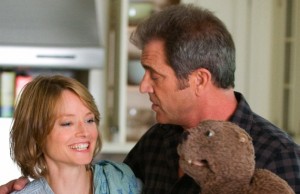Interview: Paula Patton and Laz Alonso of ‘Jumping the Broom’
Posted on May 4, 2011 at 8:00 am
 Movies have some magical moments, but some things only happen when everyone is really in the room together. There were both the night I saw “Jumping the Broom” with an audience mostly made up of students from DC’s Howard University. The movie, from Reverend T.D. Jakes, is about the wedding of a lawyer from a wealthy family and an investment banker from a working class family, raises universal questions, with clashes on race, class, and money, insecurity, doubt, betrayal, and lies — but also faith, romance, forgiveness, commitment, honor, and love. When stars Paula Patton and Laz Alonso (a Howard University alum and DC hometown hero) greeted the crowd, the excitement level exploded. Even after they left, the audience’s appreciation of the film was palpable — this is a movie you want to see with other people to enjoy its masterful mix of comedy, drama, and the resilience of families both well-established and just beginning.
Movies have some magical moments, but some things only happen when everyone is really in the room together. There were both the night I saw “Jumping the Broom” with an audience mostly made up of students from DC’s Howard University. The movie, from Reverend T.D. Jakes, is about the wedding of a lawyer from a wealthy family and an investment banker from a working class family, raises universal questions, with clashes on race, class, and money, insecurity, doubt, betrayal, and lies — but also faith, romance, forgiveness, commitment, honor, and love. When stars Paula Patton and Laz Alonso (a Howard University alum and DC hometown hero) greeted the crowd, the excitement level exploded. Even after they left, the audience’s appreciation of the film was palpable — this is a movie you want to see with other people to enjoy its masterful mix of comedy, drama, and the resilience of families both well-established and just beginning.
The next morning, they sat down with four critics to talk about the film, starting with what initially drew them to the project. A script is always a work in progress, but if the blueprint is good then you’ve got something,” said Patton. She liked the concept of the families from two worlds and playing a character who is flawed and learns to change her ways. “These movies are not rocket science. They’re meant to be feel-good and funny and make you happy, and I think it did a wonderful job of that.”
Alonso said he could tell right away the script had the bones of a really good story. “And then as actors, it is our job to put the meat on the bones.” He talked about what he learned from the other actors. “Paula has a work ethic that surpasses even my workaholic work ethic. And Loretta Devine is a method actress who would yell at me when she would see me in town if I would dare have breakfast and not include my mother. To this day, I still have to call my mom! And then you have someone like Salim Akil, who I actually modeled my character after. He directed “The Game,” “Girlfriends,” “Soul Food,” back in the day. He is such a classy, strong man. He is not going to let this film be anything but a classic depiction of these two families, especially my family. He took my family as his personal responsibility, to show that just because you may not necessarily be wealthy doesn’t mean that you don’t have dignity and you don’t have class. He didn’t play the stereotypes.”
In the first scene of the movie, Patton’s character realizes that she has not been honoring herself in her relationships with men. She makes a promise that if God will help her find a good man she will not have sex before marriage. She and Alonso spoke to us about what that brought to the story. “For my character, some of the backstory that might not have shown up in the final version of the movie is that he did not grow up very traditional, going to church, but because he fell in love with Sabrina, and she was going to try this approach, he realized that love was more important than any previous beliefs that he had and he was going to put her first,’ said Alonso. “A lot of times we see very sexualized images with sex coming before romance. This is kind of a throwback, with romance coming first.”
Patton talked about how her own parents’ marriage brought two very different families together. “There’s so much drama that goes into bringing two families together. My mom and dad could not have come from more different families. My dad was from Mississippi, his parents were sharecroppers; my mom was from Connecticut and her father was an executive at GE. So I definitely understand two different families coming together and all the drama that ensues — and all the love, and getting past all those things, and realizing your likenesses and through all the struggle that you are family, that you will support each other and count on each other and be this bond in front of God and everyone that you’re going to be together for the rest of your lives, hopefully.”





